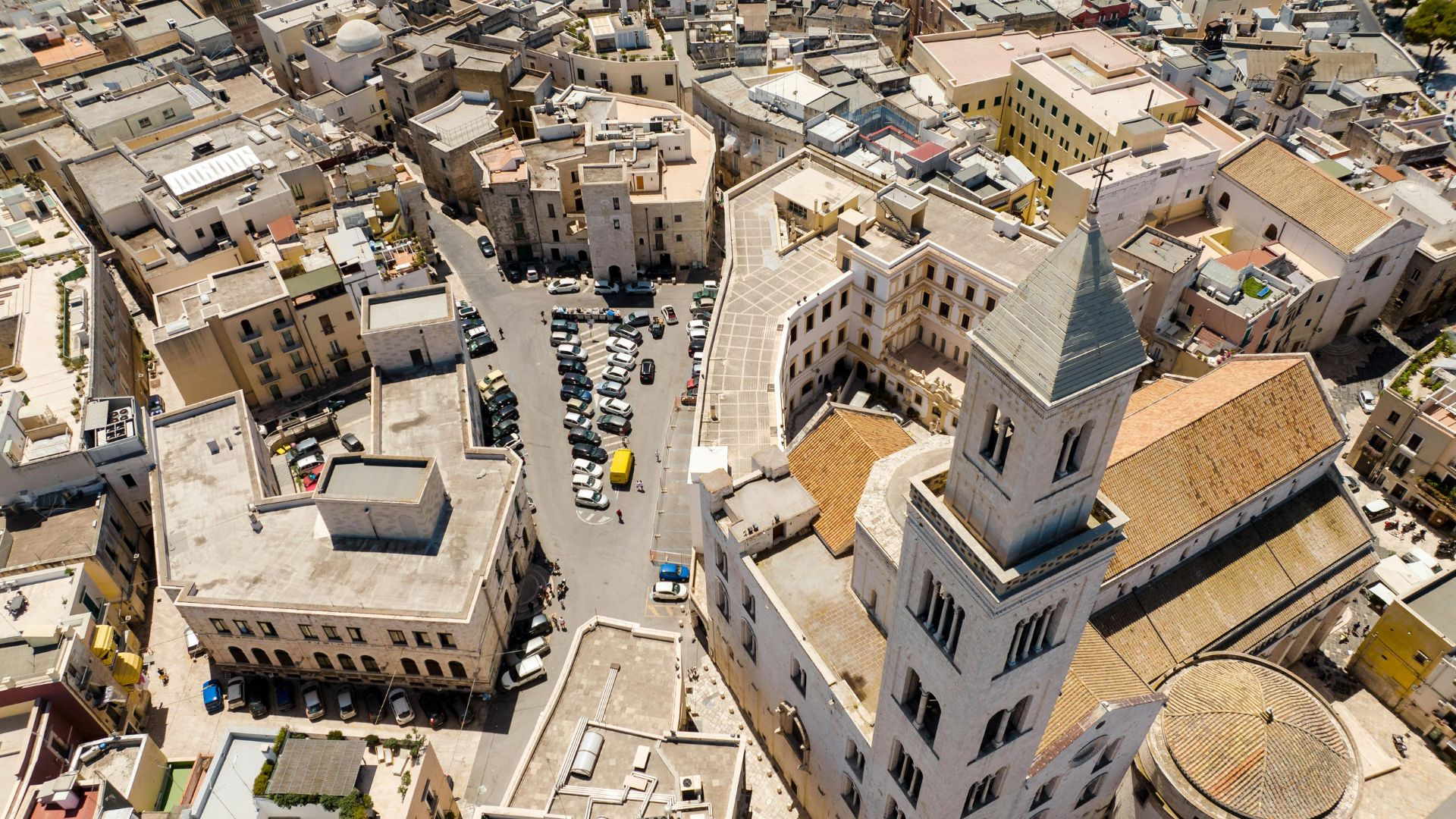At the southernmost point of Italy’s heel, I stumbled upon a spot where two seas meet and seem to embrace each other. Santa Maria di Leuca sits right at this magical junction. A majestic 47-meter lighthouse rises from the Punta Meliso promontory, marking the place.
Visitors at the lighthouse of Santa Maria di Leuca can watch the Adriatic and Ionian Seas blend together. The different colored waters swirl and meet, creating a natural phenomenon that feels almost mystical.
I spent hours just staring at the white limestone cliffs as they dropped straight into the clear water below. The panoramic views from up there are jaw-dropping, stretching across both seas. Standing at Italy’s finibus terrae—the end of the land—felt surreal.
Nearby, the Basilica sanctuary brings a spiritual vibe to this already special place.
Getting to Leuca from Lecce was a breeze. The drive took about an hour, winding through the gorgeous Puglia countryside. What struck me was how fast the landscape changed, shifting from rustic inland scenes to dramatic coastal views.
The town itself feels laid-back. Seafront promenades invite you to stroll in the evenings while the lighthouse beam sweeps over the water, right where the two seas merge.
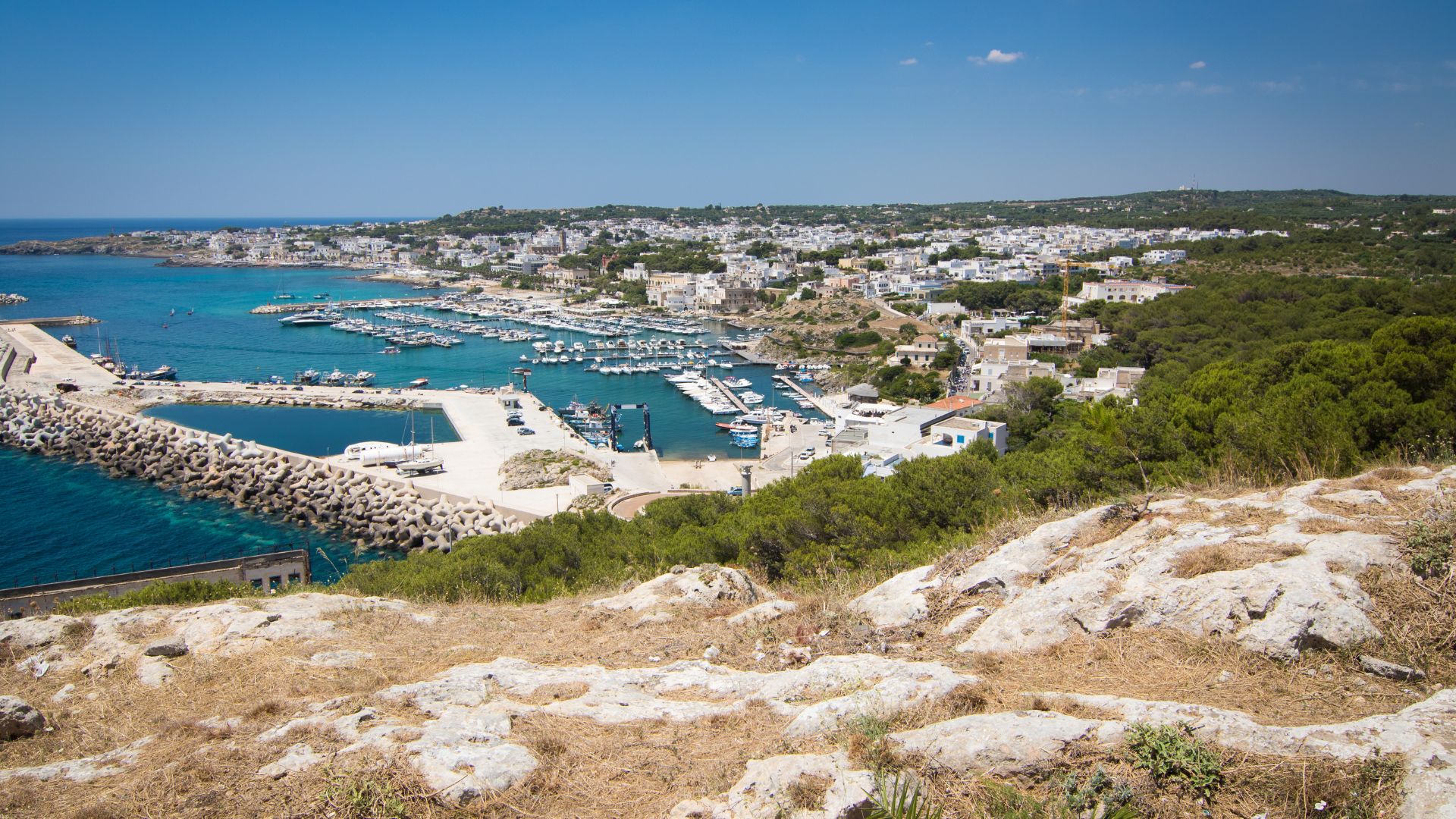
Where Two Seas Meet: The Unique Setting of Santa Maria di Leuca
Santa Maria di Leuca sits at the very tip of Italy’s heel. Here, the Adriatic and Ionian seas come together in a show of natural beauty.
Honestly, this coastal town offers some of the best views in all of Puglia.
Meeting Point of the Ionian and Adriatic Seas
What fascinates me most about Santa Maria di Leuca is how it marks the meeting point of two major seas. At Punta Meliso, you can stand and watch the Adriatic Sea meet the Ionian.
Locals say you can spot a clear line where the waters mix, though the real fusion happens just north of here.
When I visited, I stood on the promontory and watched the differently colored waters swirl together. The Adriatic looks deep blue, while the Ionian often shimmers turquoise.
This phenomenon creates views that photographers and nature lovers, like me, can’t get enough of.
The currents from both seas shape the coastline in unique ways. Fishermen here swap stories about the different fish species from each sea that show up in these waters.
Salento Peninsula’s Southernmost Tip
Santa Maria di Leuca marks the southernmost point of the Salento Peninsula. At the “finibus terrae” (end of the land), I found an impressive lighthouse that stands 47 meters tall, reaching 102 meters above sea level at Punta Meliso.
This lighthouse guides ships between the two seas. It’s now one of the most iconic sights in the region. If you climb to the top, the panoramic views are just incredible.
A beautiful basilica stands nearby, adding a spiritual note next to the lighthouse. At sunset, both structures create a dramatic silhouette against the sky. Golden light seems to soak the entire promontory.
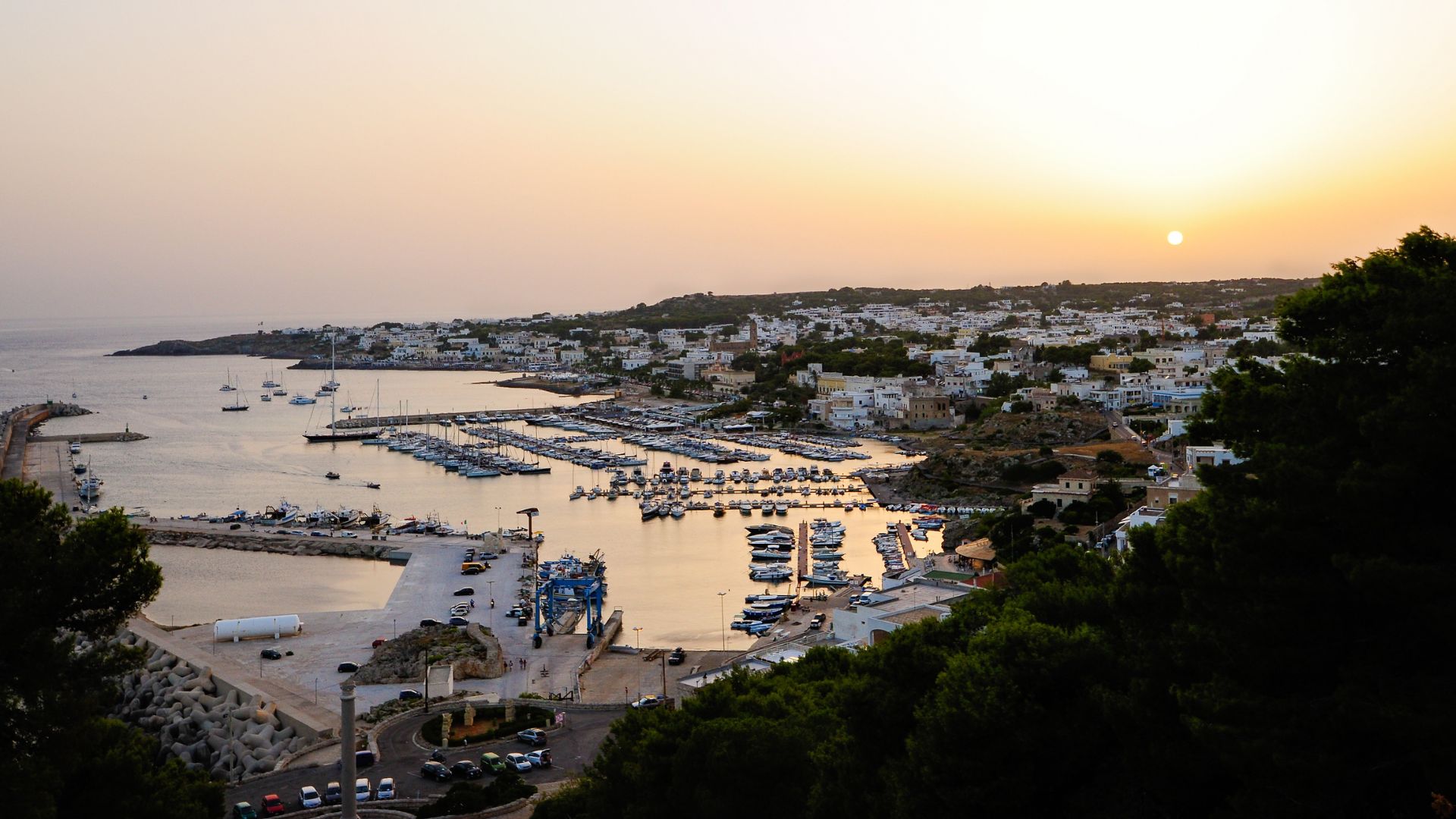
Punta Ristola and the Dramatic Cliffs
Just beyond Punta Meliso, I wandered over to Punta Ristola. Here, limestone cliffs plunge into the clear blue below, shaped by wind and water over thousands of years.
The cliffs make a bold contrast against the sea. I took a boat tour along the coast to take them in. The rock faces are dotted with caves and grottoes, some you can only reach by water.
Local guides pointed out rock formations with quirky names inspired by their shapes. Rock climbers and adventure seekers flock here to scale these natural walls over the Mediterranean.
Influence of the Mediterranean Climate
The Mediterranean climate defines Santa Maria di Leuca. Warm, dry summers and mild winters make it an ideal place to explore year-round.
I think spring and fall are perfect—great weather and fewer crowds.
Wild herbs like rosemary and thyme scent the air along the coastal paths. Olive trees, some centuries old, dot the countryside.
Clear skies and endless sunshine create perfect lighting for photos. Nearly every sunset during my stay turned both seas into a canvas of color. It’s hard to describe just how magical it feels to stand there as the day ends.
The Lighthouse at the Tip of Italy’s Heel
At the southernmost tip of Italy’s heel, the lighthouse of Santa Maria di Leuca stands tall and proud. This iconic tower marks the exact spot where the Adriatic and Ionian seas meet, with white limestone cliffs as its dramatic backdrop.
History and Cultural Significance
They built the lighthouse in 1866, and it’s been watching over these waters for more than 150 years. At 47 meters tall, it’s one of Italy’s most important lighthouses and a true symbol of the region.
Before the lighthouse existed, people lit fires here to guide sailors. The Romans considered this spot sacred, believing it was the edge of the world—hence the nearby basilica’s name, “de Finibus Terrae” (the end of the earth).
During World War II, Allied ships relied on this lighthouse. Today, it stands for both maritime safety and Puglia’s cultural heritage. Locals shared stories about how their grandparents would look for the lighthouse’s beam during storms, finding comfort in its steady light.
Architectural Features and Design
The lighthouse features a cylindrical white tower attached to a two-story keeper’s house. It’s the black lantern room at the top that stands out sharply against the sky.
I climbed the spiral staircase inside—254 steps to the top! The original Fresnel lens still works, though now it’s automated instead of manually operated like it was until the 1980s.
What caught my eye was how the design balances function and beauty. They used local limestone, so the lighthouse blends with the cliffs. Its octagonal lantern room lets the light shine in all directions at sea.
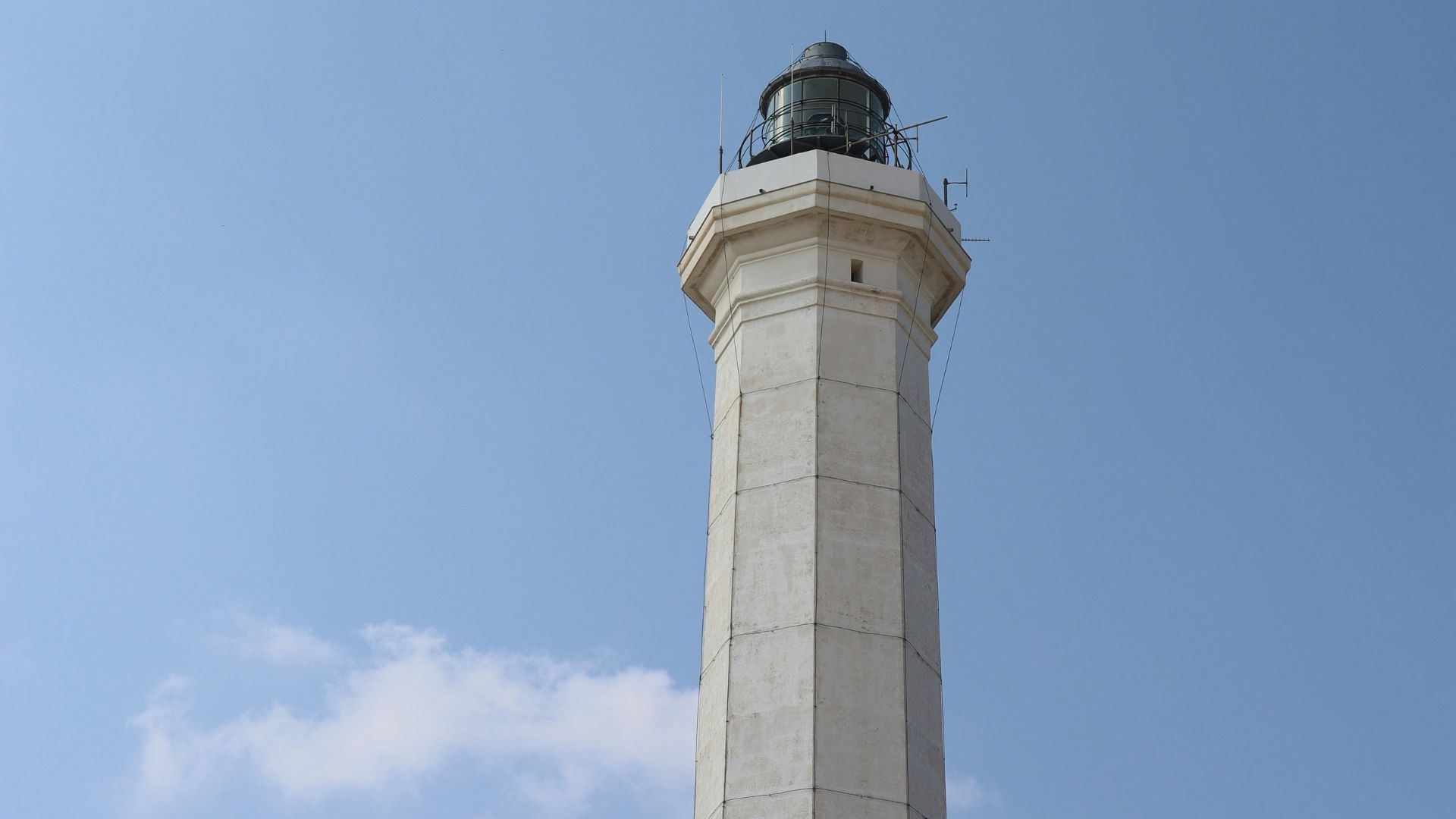
Panoramic Views and Sunset Magic
At the top, you get 360-degree views. You can see where the two seas meet, the colors shifting from deep blue to turquoise.
Below, the limestone cliffs stretch out along the coast. On clear days, I could even spot the mountains of Albania across the water. That view makes you realize how this lighthouse connects different parts of the world.
Sunset here is something else. The golden light turns the white cliffs orange and pink. Visitors gather for this moment when the sun dips into the sea and the lighthouse throws its first beam of the night.
Photographers show up early to get the best spot. I’d say it’s worth the wait.
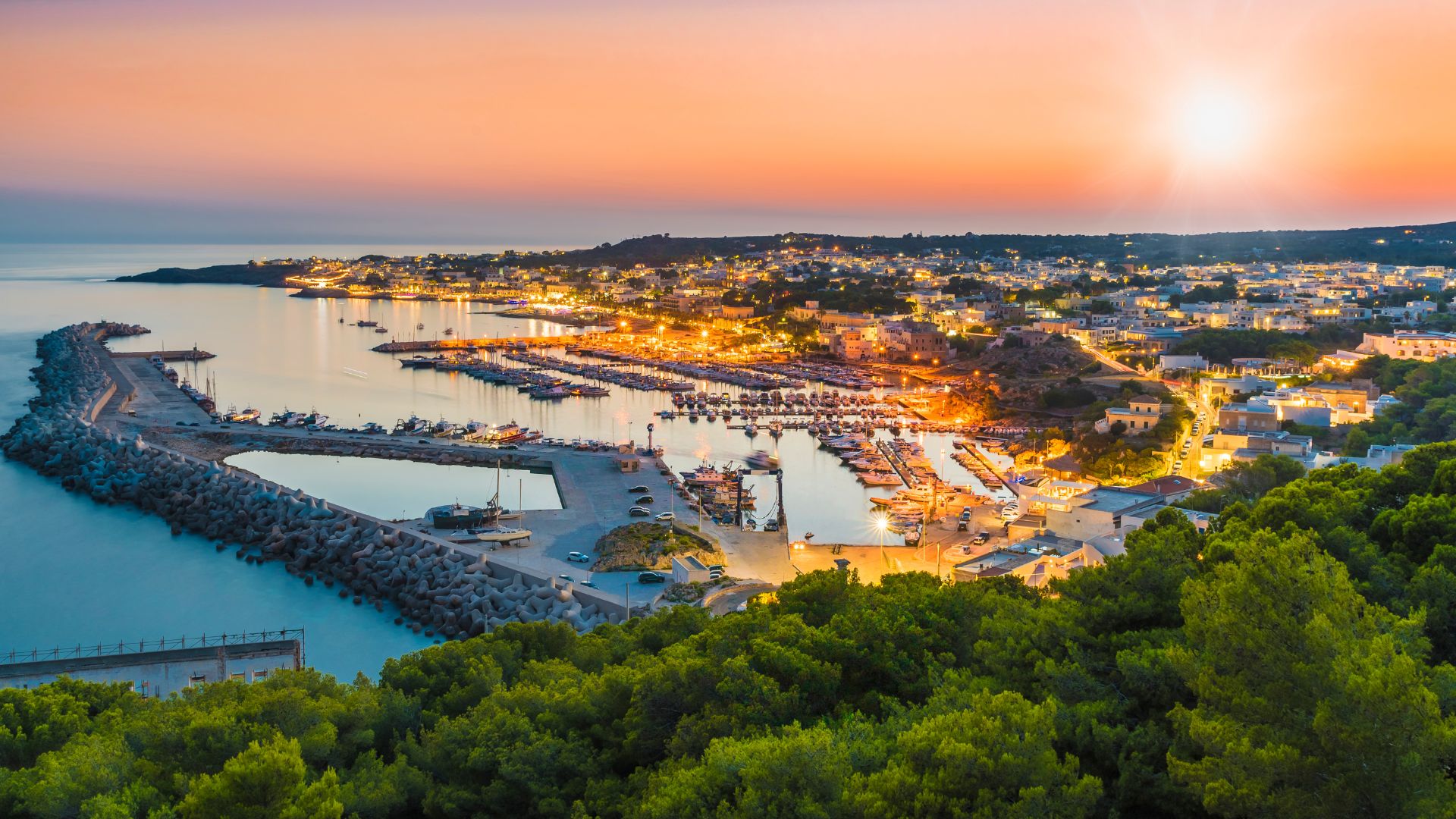
Guiding Ships: A Beacon for Seafarers
The lighthouse still guides ships safely where the seas meet. Its beam reaches 27 nautical miles (about 50 kilometers) out to sea, flashing every 15 seconds.
I chatted with a retired sailor who told me how essential this lighthouse was before GPS. The waters here, where the Adriatic meets the Ionian, can get rough because of the currents. The lighthouse was a lifeline.
Even now, with all the tech, the lighthouse keeps watch. When fog rolls in, its horn sounds across the water—a haunting but comforting sound.
The Italian Navy maintains the lighthouse so it stays operational year-round. Even though it’s automated now, it stands as a testament to centuries of maritime tradition. The people of Santa Maria di Leuca still feel a deep connection to the sea and this beacon that watches over them.
Exploring Santa Maria di Leuca and the Surrounding Coast
Santa Maria di Leuca draws visitors with its special spot at Italy’s southernmost tip, where the Adriatic and Ionian seas meet dramatically.
The area serves up a mix of natural beauty, great food, and real Italian coastal charm.
Seaside Town Charms and Local Culture
Walking around Santa Maria di Leuca feels like stepping into a postcard. Elegant white villas from the early 1900s line the waterfront, set against the blue of the sea.
The local vibe is welcoming and laid-back. In the evenings, families gather in the main piazza, and the slow pace just pulls you in.
The Basilica of Santa Maria de Finibus Terrae (“End of the Earth”) is a must-see. Legend has it that St. Peter landed here on his way to Italy, making it a spot with real religious significance.
I loved chatting with locals at the morning fish market. It’s the best place to hear the Salentino dialect and get tips for hidden spots only residents know.
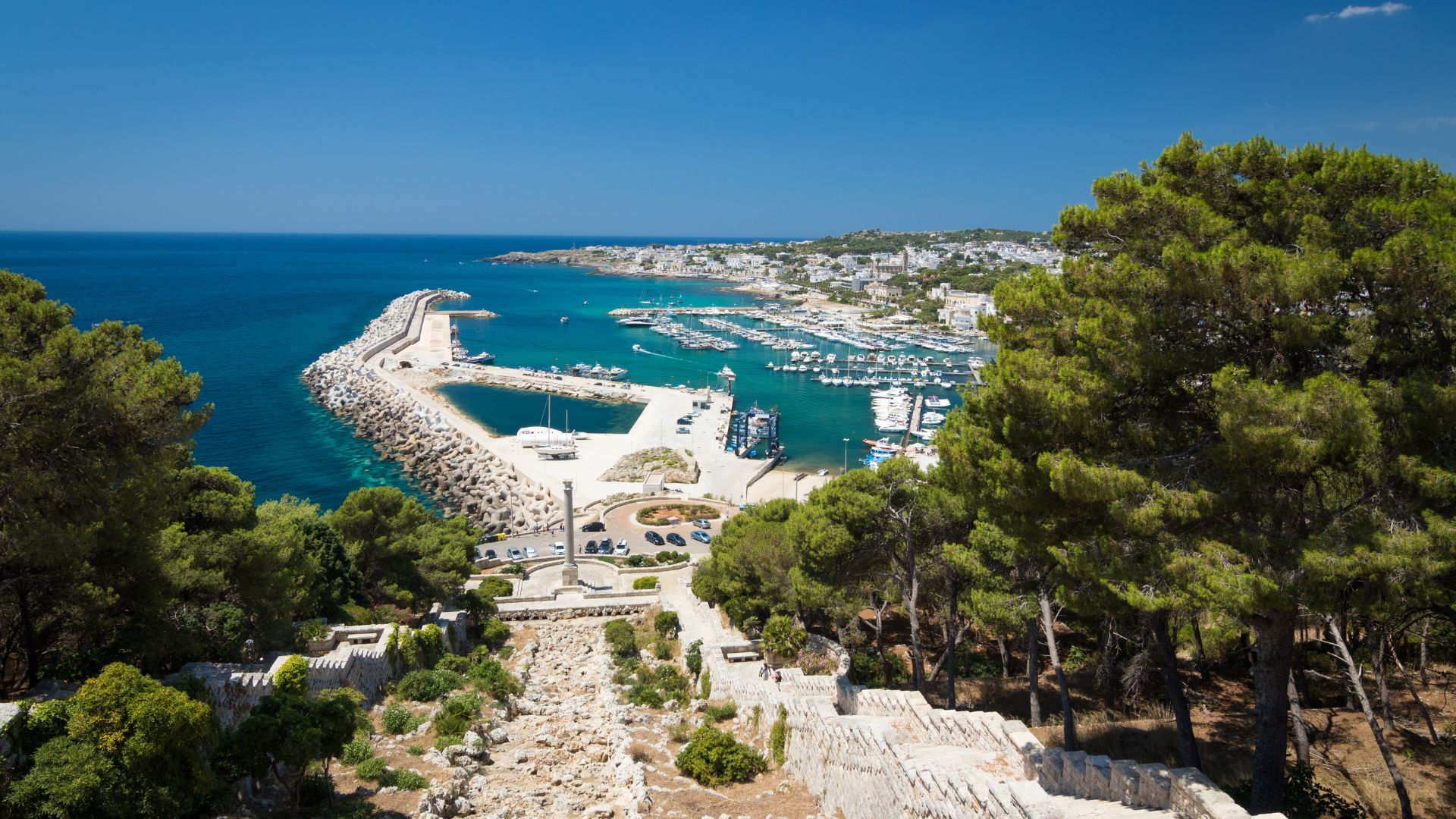
Beaches, Coves, and Sea Caves
Around Leuca, you’ll find some of Puglia’s best swimming spots. I switched between the sandy beaches on the Ionian side and the rocky coves on the Adriatic.
But the sea caves steal the show. I hopped on a boat tour to explore a few favorites:
- Grotta del Diavolo (Devil’s Cave)
- Grotta del Soffio (Cave of the Breath)
- Grotta Tre Porte (Three Doors Cave)
Sunlight filters through the rocks, changing the color of the water. It’s honestly magical.
If you want more privacy, check out Punta Ristola. This rocky promontory just west of the lighthouse is perfect for a quiet swim, away from the crowds.
Seafood Delights and Culinary Experiences
Eating in Leuca is heaven for seafood fans. I feasted on fresh fish, simply cooked with olive oil and lemon—honestly, that’s all you need to taste the sea.
Don’t miss these local specialties:
- Polpo alla pignata (octopus slow-cooked in terracotta)
- Spaghetti ai ricci (sea urchin pasta)
- Pesce azzurro alla griglia (grilled blue fish)
Seaside restaurants near the marina offer sunset views that make every meal better. The smaller, family-run places often serve the most authentic dishes.
Before you leave, grab a pasticciotto—a local pastry filled with custard cream. Pair it with an espresso for a perfect afternoon pick-me-up after exploring the coast.
Santa Cesarea Terme and Castro Coastal Wonders
A bit up the Adriatic coast, I found Santa Cesarea Terme, a spa town built on thermal waters rich in minerals. The architecture here blends Moorish and Italian styles, which gives the town a unique look.
The historic thermal baths date back to the 1800s. I spent a relaxing afternoon soaking in the healing waters, gazing out at the sea.
Further north, Castro wowed me with its medieval old town perched on limestone cliffs. The Aragonese Castle offers wide-open views along the coast.
The Castro Marine Park has some of the clearest water I’ve seen in Italy. Snorkeling here, I spotted colorful fish and wild underwater rock formations.
Both towns make easy day trips from Leuca. Each offers a different slice of coastal life, and together they round out any trip to Italy’s spectacular heel.
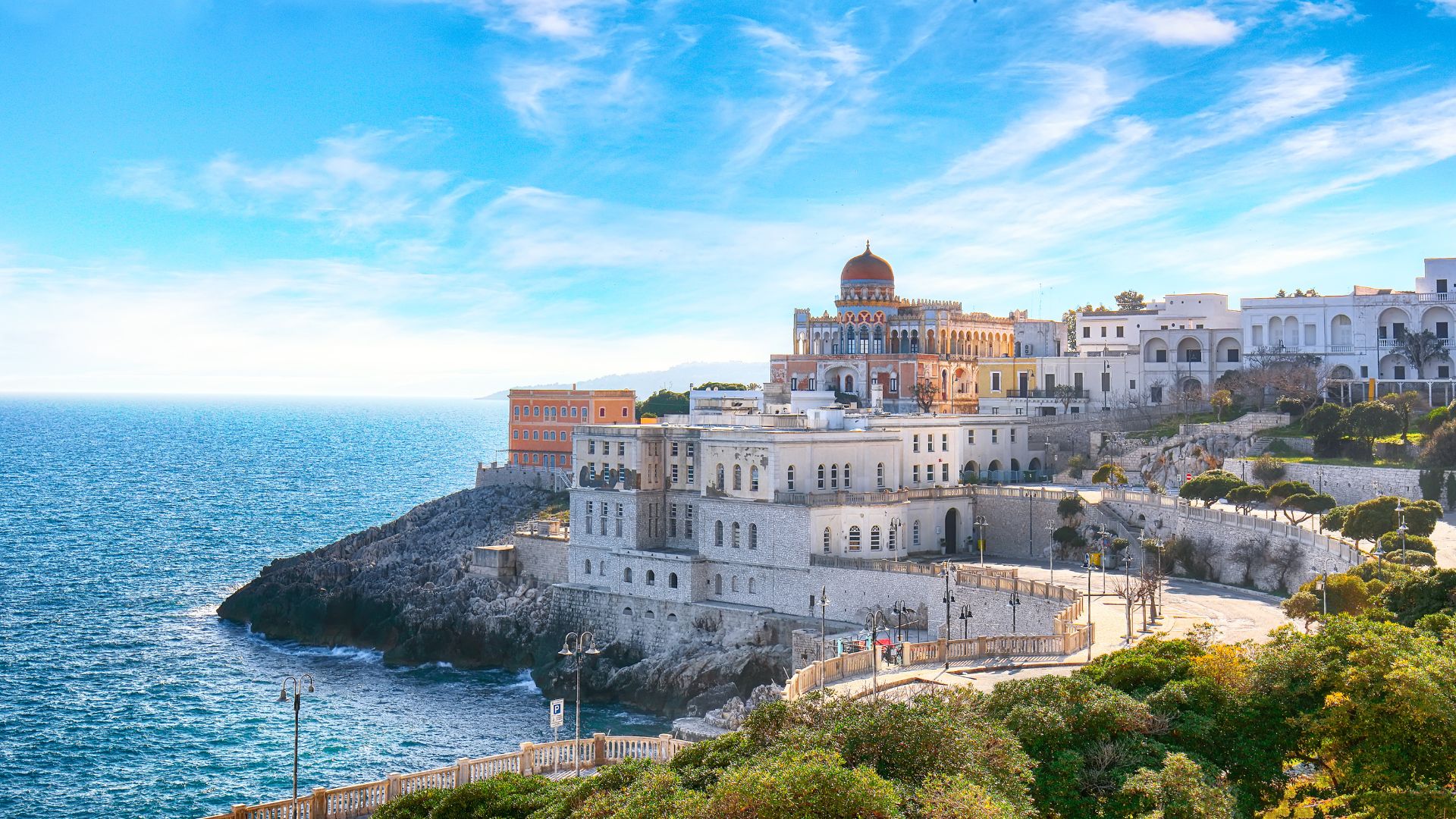
Journeys Through Puglia: Must-Visit Towns and Heritage Sites
Puglia’s magic isn’t just about its coastline. The region’s towns burst with history and unique architecture.
Each place brings its flavor—think coastal fortresses and inland gems.
Otranto and Its Historic Cathedral
Wandering Otranto’s narrow streets feels like stepping back in time. This Adriatic gem is home to one of Puglia’s real treasures—the Cathedral of Santa Maria Annunziata.
The cathedral’s 12th-century mosaic floor blew me away. Monk Pantaleone created it, and it covers the whole nave with Old Testament scenes and medieval legends.
The Aragonese Castle stands guard over the town, its walls looking out over turquoise waters. I learned how this fortress protected locals from Ottoman attacks in the 1400s.
The historical center’s whitewashed buildings and local artisans make for a charming stroll. Otranto’s mix of Byzantine, Medieval, and Aragonese influences makes it truly one-of-a-kind.
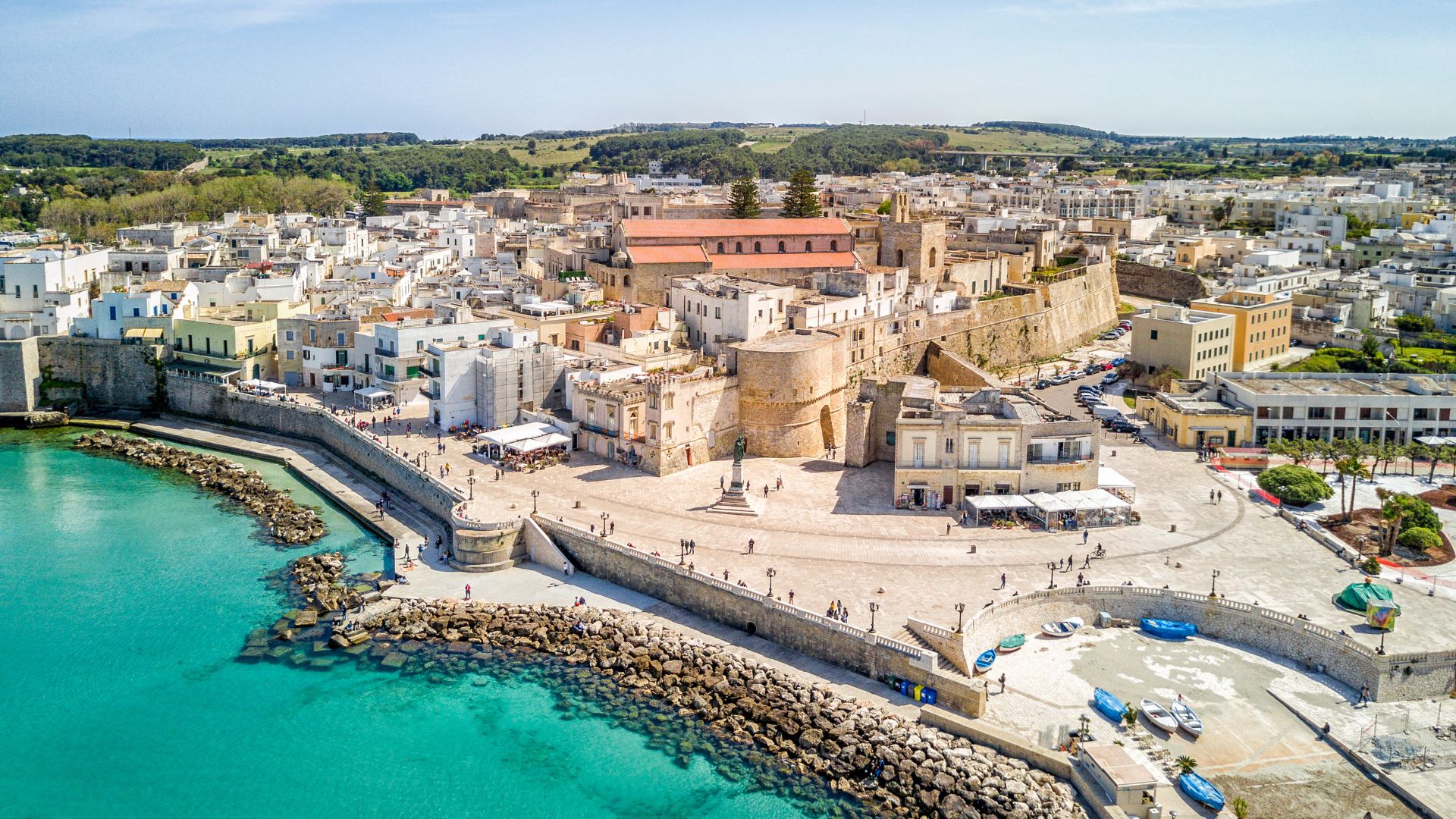
Gallipoli’s Seaside Splendor
Gallipoli’s old town sits perched on a limestone island, linked to the mainland by a 16th-century bridge. I wandered along the ancient sea walls at sunset, watching fishing boats glide back with their daily catch.
The heart of old Gallipoli reveals a maze of alleys lined with Baroque churches and noble palazzos. The Cathedral of Saint Agatha stands out, its ornate façade and colorful decorations impossible to miss.
Honestly, the fish market near Porto Antico was my favorite spot. Locals crowd in every morning, eager to grab the freshest seafood and keep those centuries-old traditions alive.
The beaches around Gallipoli boast crystal-clear waters and fine sand. Purità Beach hugs the old town walls, and the contrast between ancient stone and the bright blue sea is just stunning.

Alberobello’s Trulli Houses
When I first saw Alberobello’s trulli neighborhood, I was honestly speechless. These conical-roofed limestone homes, some dating back to the 14th century, look like they’re straight out of a fairy tale.
The UNESCO-protected site packs over 1,500 trulli mostly into the Rione Monti and Aia Piccola districts. I spent hours just wandering among the whitewashed houses, many now home to shops, restaurants, and cozy accommodations.
Each trullo roof has painted symbols—some religious, others magical or astronomical. Locals told me they built these unique homes without mortar so they could quickly dismantle them when tax inspectors showed up.
If you want the place mostly to yourself, go early in the morning before the tour groups arrive. The Trullo Sovrano, which is a rare two-story trullo, offers a glimpse into how families used to live in these quirky homes.

Savoring the Apulian Landscape: Olive Groves and Coastal Adventures
Puglia surprises you with its mix of inland beauty and striking coastlines. The landscape tells a story of ancient traditions and natural wonder, stretching all the way from rolling countryside to the turquoise sea.
Olive Groves and Countryside Escapes
I got lost, in the best way, among Puglia’s iconic olive groves that seem to stretch forever. Some of these gnarled trees have stood here for centuries, their twisted trunks almost whispering stories from the past.
During my countryside bike ride, I kept stopping to admire how the silver-green leaves shimmered in the sunlight. The land is a patchwork of vineyards and vegetable gardens tucked between the olive trees.
Local farmers still pick olives by hand in many places, sticking to the old methods. Walking paths meander through the groves, offering a peaceful escape from the busier coast.
If you get the chance, join a guided tour and taste olive oil straight from family-run farms—the peppery bite of real Puglian oil is unforgettable!
Porto Cesareo and the Pristine Coast
Porto Cesareo greeted me with its stunning marine reserve and crystal-clear waters along the Ionian coast. This fishing village has grown into a favorite beach spot, but it hasn’t lost its authentic vibe.
The protected coastline stretches for nearly 17 kilometers, with white sand beaches that could rival any Caribbean shore. I spent mornings exploring the small harbor, where fishermen still bring in their catch.
Nature lovers will love the Porto Cesareo Marine Protected Area. You can snorkel among schools of colorful fish darting through seagrass meadows right offshore.
Several beachfront restaurants serve up the day’s catch, prepared simply so the freshness shines.

Punta Prosciutto’s Turquoise Waters
Just a short drive from Porto Cesareo, I found Punta Prosciutto’s beach—a place that felt almost too beautiful to be real. The water here is so turquoise, it almost looks fake.
The shallow water stretches far from the shore, creating a natural swimming pool that’s warm and gentle. Fine white sand squeaks underfoot as you walk, and in late spring, I barely saw anyone else on the beach.
Sometimes local vendors wander by selling fresh fruit and panini—perfect for a lazy lunch right on the sand. If you want the calmest water and quietest vibe, go early in the morning.
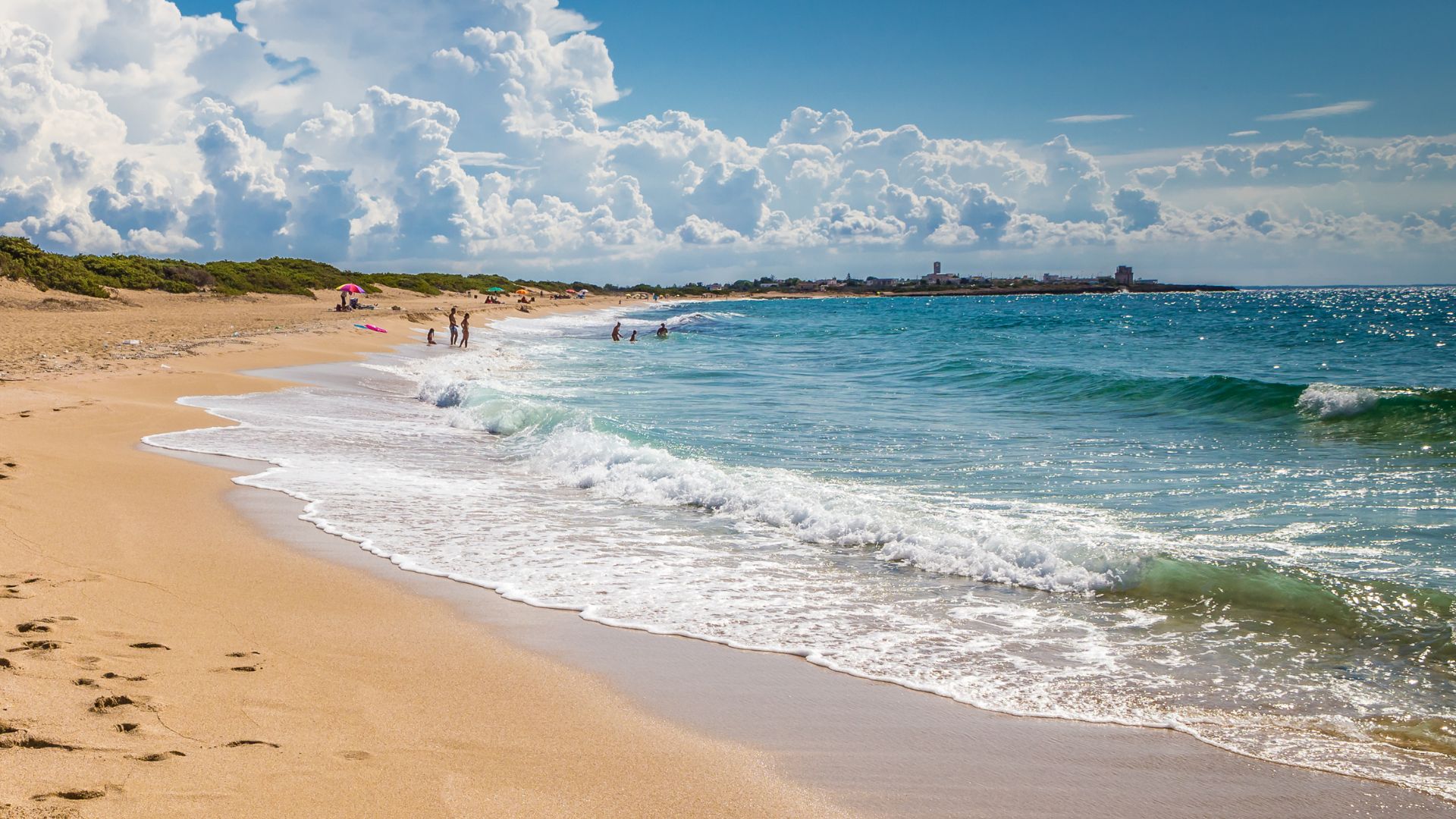
Lama Monachile and Polignano a Mare
Polignano a Mare completely charmed me with its dramatic perch atop limestone cliffs above the Adriatic. The town’s most iconic spot, Lama Monachile, is a pebble beach tucked under an ancient Roman bridge.
Swimming in the cove, surrounded by towering cliffs, felt almost unreal. The deep blue water contrasts with the white stone buildings above, and I loved wandering the old town’s whitewashed lanes, where poetry covers stairways and doors.
Cliff diving is big here—locals leap from dizzying heights, though I was happy just to watch. Sunset at a cliff-edge café, drink in hand and waves crashing below, is something you shouldn’t skip.
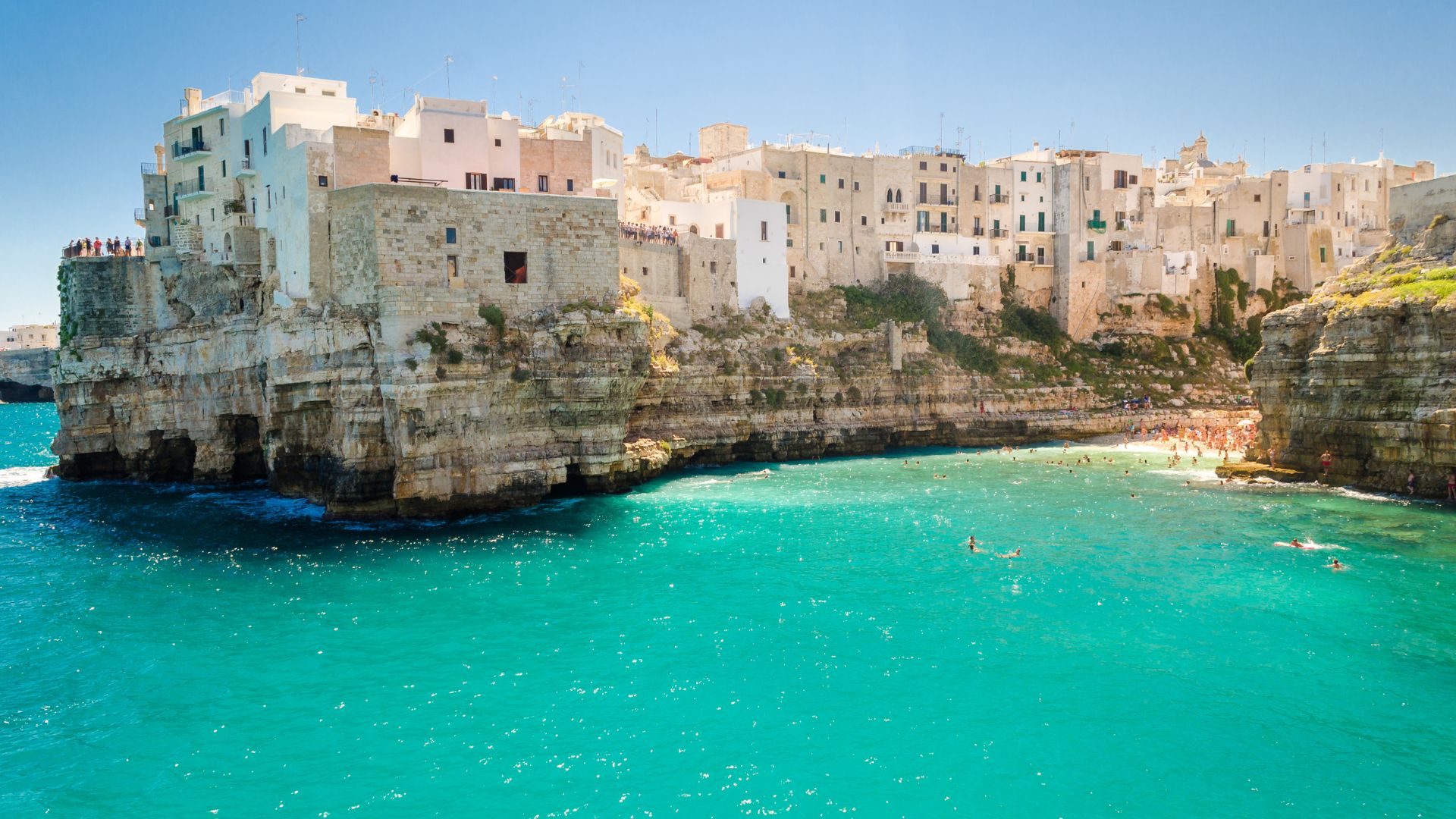
Off-the-Beaten-Path Treasures in the Heel of Italy
Puglia hides plenty of gems that most travelers miss. The region reveals its true character through whitewashed towns, wild nature reserves, and historic spots shaped by centuries of culture.
Ostuni’s Whitewashed Beauty
I stumbled on Ostuni during my travels and instantly fell for its gleaming white facades. Called “La Città Bianca” (The White City), this hilltop town offers sweeping views of the Adriatic and endless olive groves.
Wandering Ostuni’s maze-like streets, I found tiny artisan shops hidden in limestone archways. The whitewashed buildings aren’t just pretty—they helped reflect sunlight and keep homes cool long before air conditioning.
Don’t skip the 15th-century cathedral with its beautiful rose window. Early morning is best, when the rising sun bathes the white walls in gold.

Discovering Gargano and Its National Park
Gargano forms the “spur” on Italy’s boot and holds one of the country’s most underrated natural wonders. Gargano National Park protects ancient forests, dramatic cliffs, and quiet beaches that somehow stay uncrowded.
The Foresta Umbra (Shadow Forest) shelters some of Europe’s oldest beech trees. While hiking through this cool, green world, I spotted rare orchids and woodland creatures you rarely see elsewhere.
Hidden coves dot the coastline, reachable only by boat or footpaths. My favorite was the secluded beach near Due Sorelle, where limestone formations glow at sunset.
Fishing villages like Peschici and Vieste perch on cliffs, serving up authentic seafood and jaw-dropping views.
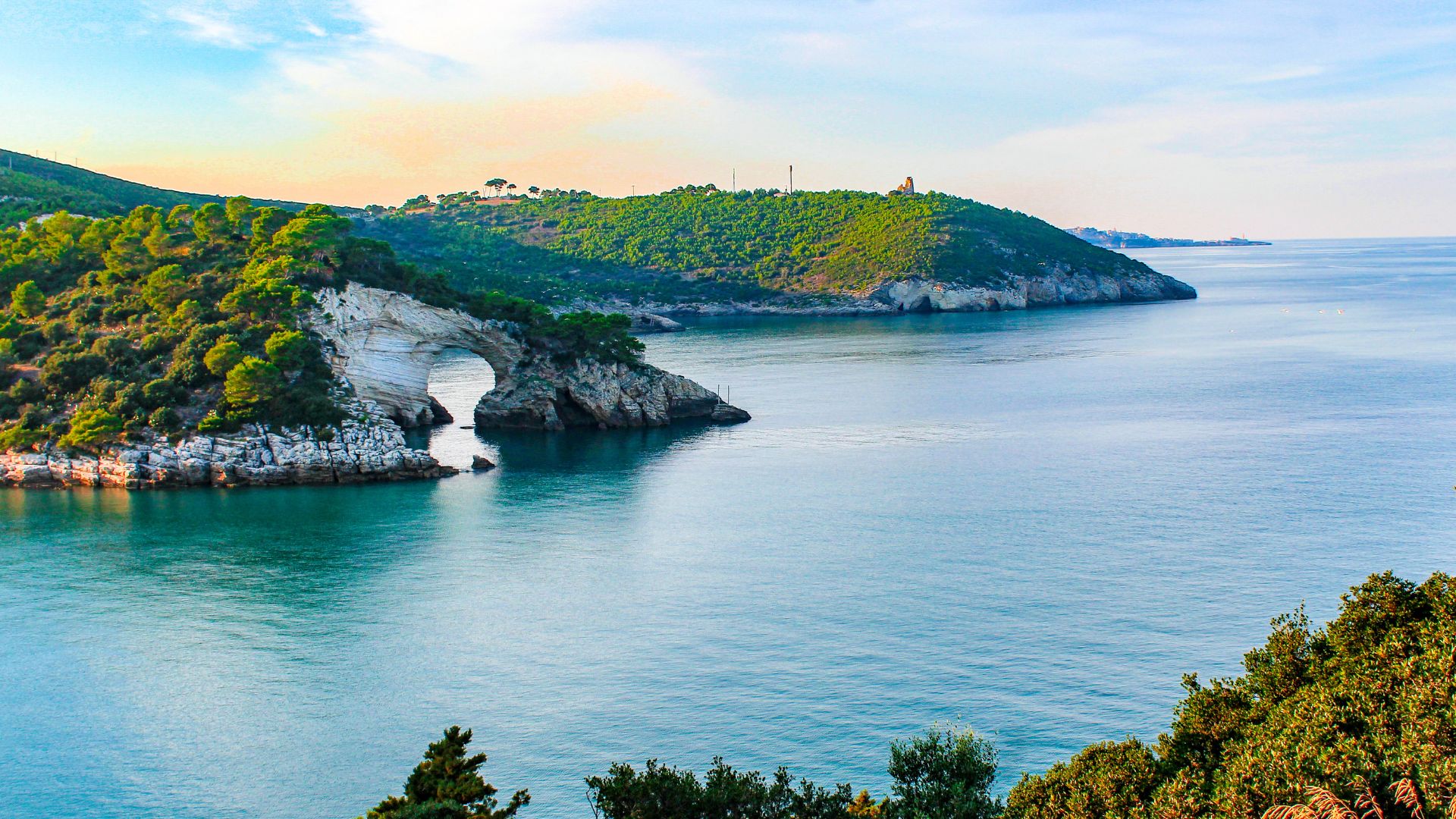
History in Bari and Matera
Bari’s old town—Bari Vecchia—surprised me with its genuine Italian vibe. I watched local women making orecchiette pasta right on their doorsteps, keeping alive traditions their families have passed down for ages.
You’ll find the Basilica of Saint Nicholas here, where they say the real Santa Claus rests. I lost track of time wandering those narrow streets, stumbling across hidden courtyards and old Byzantine churches.
If you head just past Puglia’s border, you’ll hit Matera. It’s a UNESCO World Heritage site, and honestly, it’s famous for these ancient cave dwellings called “Sassi.”
Walking around Matera? It’s wild—it feels like you’ve jumped back thousands of years. The caves that used to mean hardship now house boutique hotels and cozy restaurants, but they still hang onto that deep historical feel.
